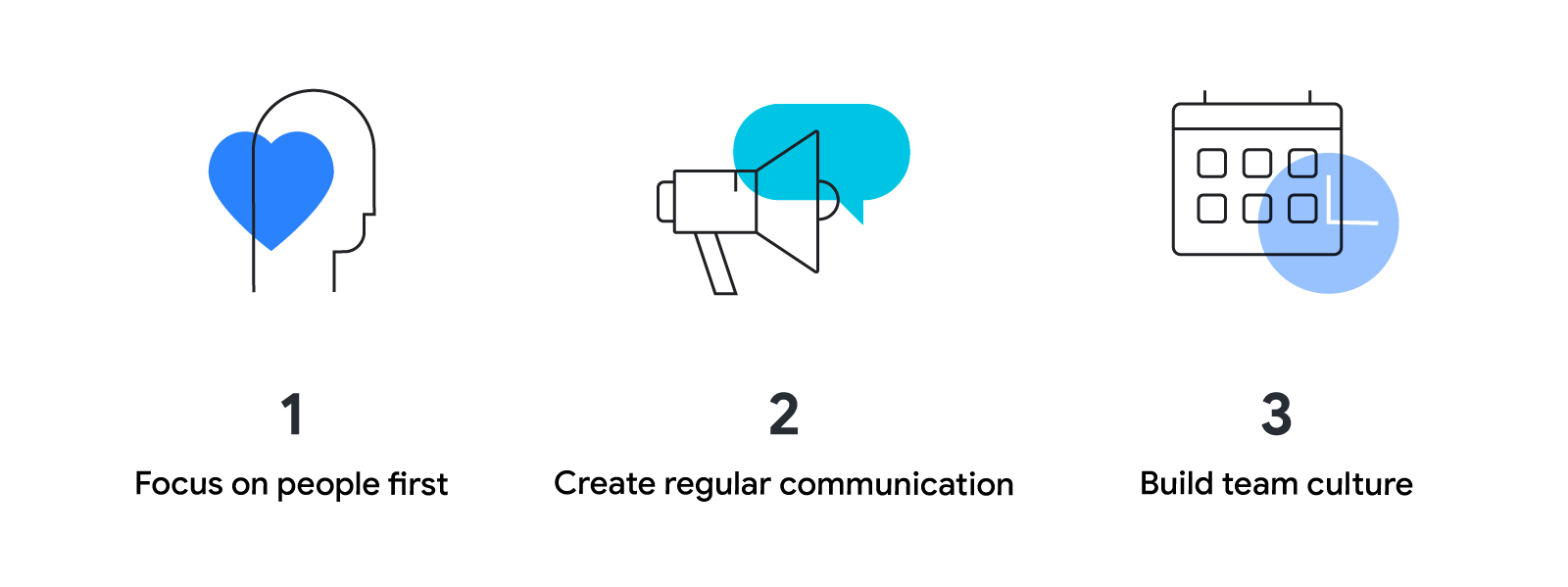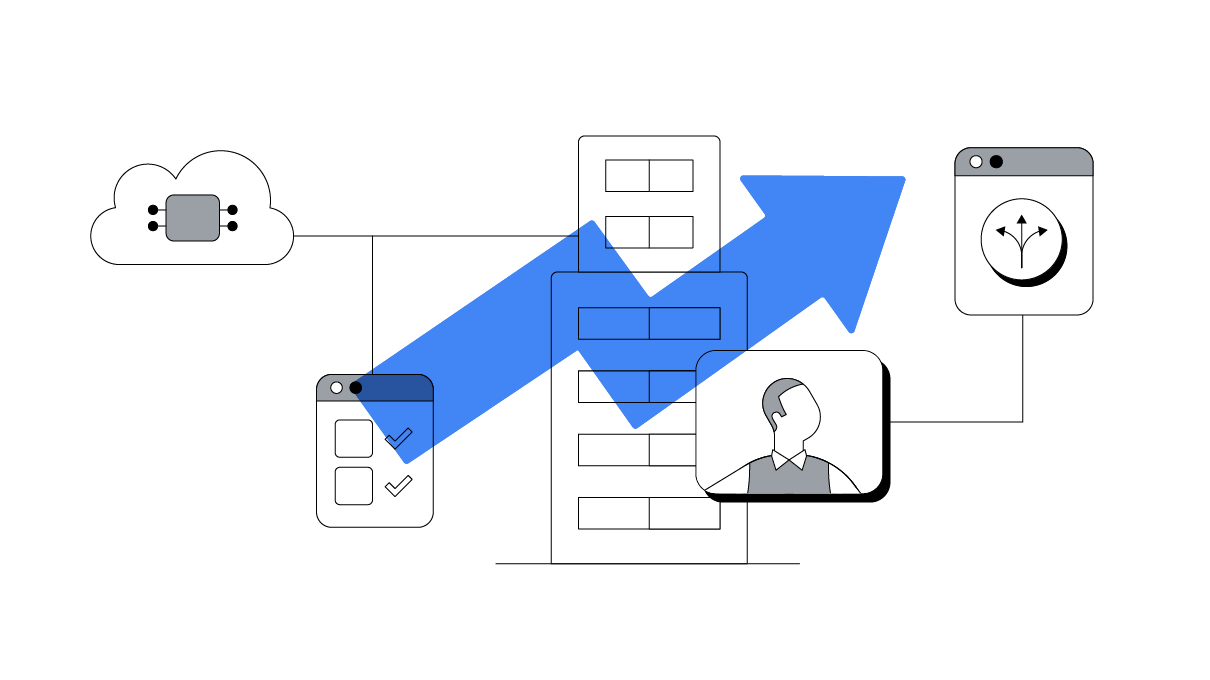These days, marketing leaders are being challenged to rethink their entire strategy, and this also includes finding ways to maintain connection and culture and employee motivation with a displaced workforce now working from home.
During high-pressure times, it can be easy to overlook the things that help cultivate connection and keep people motivated. But I believe that investing in our people is more critical than ever before to foster an inclusive and resilient workforce — and that can make it easier for your employees, and your business, to navigate uncertainty.
At Google, we’ve been an advocate of flexible working for our employees for some time and there are a number of practices we’ve put in place to establish a successful flexible working approach across our business that encompasses all employees. We worked with Timewise, a leading flexible working consultancy, to shape our approach and policies.
These flexible working practices have allowed us to be on the front foot in dealing with our entire workforce now working from home during the COVID-19 crisis. That said, we’ve still had to think differently about how we build virtual team culture to ensure our teams stay connected and motivated.
Here are three guiding principles we’re following to stay connected amidst the uncertainty.
3 guiding principles Google is using to stay connected

1. Focus on people first
Be present for others, even when you’re not working in the same space. People adapt to working from home differently based on their personality type or personal situation. Some jump right in but others may feel isolated or have immense stress due to family being around, or no physical separation between work and life. If you are able to, offer additional leave for carers and parents where necessary, and share home learning resources for home-schooling parents.
Recognise that these are stressful times and everyone’s situation is different. Giving your employees the space and flexibility they need to take care of themselves and their families is always important. Now, more than ever, this is critical. Set realistic performance targets that are mindful of the current stresses your employees are facing, or make these targets optional.
Routines can add a much-needed sense of stability to people’s lives, and can help employees stay connected and informed.
Mindfulness and exercise can help your team cope with additional stress and help them to detach from work. Make it known that mental health and wellbeing is a priority and offer mental health check-ins, while sharing tips to stay physically active.
Don’t be afraid to share what’s working for you as well as what isn't working for you. We can lean on one another for inspiration and strength right now and speaking honestly goes a long way. If you’re taking time off to deliver food to friends or family, or simply need some space to recharge, don’t just tell your team that you’ll be away for a couple of hours, share why you’ll be away.
2. Create more regular communication
Routines can add a much-needed sense of stability to people’s lives, and can help employees stay connected and informed. During this transition phase, prioritisation is key. Right now your main priority should be putting the structures in place that employees need to adapt to their new environment and stay focused.
We’ve adopted total communication transparency via a regularly updated, central all-company website. We’ve also collated and shared video conferencing, virtual event and client engagement best practice guides to employees to empower this new way of working.
We’re also challenging our leaders to create structure amidst the ambiguity by holding onto existing routines where possible. We’ve shifted regularly scheduled weekly events like team meetings, All-Hands sales meetings, and office socials to Hangouts Meet.
Team leads are also doing morning check-ins to help set priorities for the day, check in on wellbeing, and share any notable progress on projects so teams can start the day feeling motivated and involved.
3. Concentrate on building morale and team culture
Take time to celebrate even small accomplishments with the team so work doesn’t feel like an endless stream of tasks. We’re seeing a lot more informal meetings in people’s calendars these days, whether it’s for a virtual coffee, team pub quizzes over video conference, or an online work session with a buddy.
Over the years, Google’s people analytics team has conducted extensive research on team dynamics and how they contribute to team effectiveness. They found that how a team works together can be critical, with “psychological safety” (trusting they can take a risk or be vulnerable without being judged or looked down upon) a top consideration, whether they are in the same location or not.
They also looked specifically at teams working in distributed locations and found the most effective teams were the ones that prioritised getting connected, being connected and feeling connected. For this reason, we need to think more about how we’re connecting. On video calls, address logistical considerations like timezones and video chat functionality, then refrain from jumping right in. Instead, kick-off discussions with a personal anecdote, like what it’s like to be at home with the kids or how you are supporting family members or neighbours. Recognise someone’s progress on a challenging project, or thank someone who went above and beyond. Be sure to stay present for others.
While these approaches have worked so far, we’re mindful that this is an ever-changing situation and that we’ll need to evolve our approach and continue to experiment accordingly in the coming weeks and months. It’s important that other businesses adopt what’s right for them in line with their existing business cultures.
These are no doubt challenging times in the world of work, but when it comes to team culture, some businesses may emerge from all of this with streamlined working practices that work better for both their employees and ultimately the business in the long-term. We think that the future of work will forever be more flexible.
Here are some more helpful resources for you and your team, adjusting to a new normal, while trying to stay connected working from home.
Resources:
- Resources and insights to help you navigate uncertain times
- Google tips for working together when we’re not together
- How Google Cloud is helping during COVID-19
- Training resources for remote working and learning
- How to set up Meet to help your team work remotely
- Tools for helping businesses and schools stay connected in response to Coronavirus
- Working from home essentials
- Coping techniques for stressful days
- Resources to help your small business manage through uncertainty





